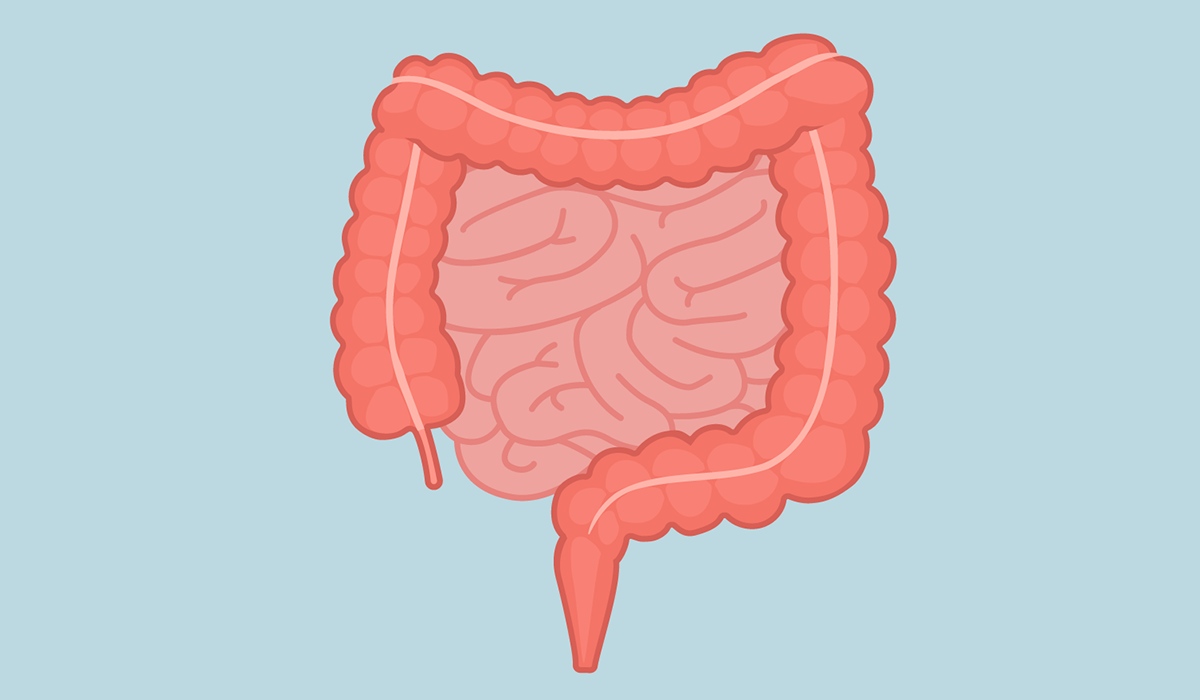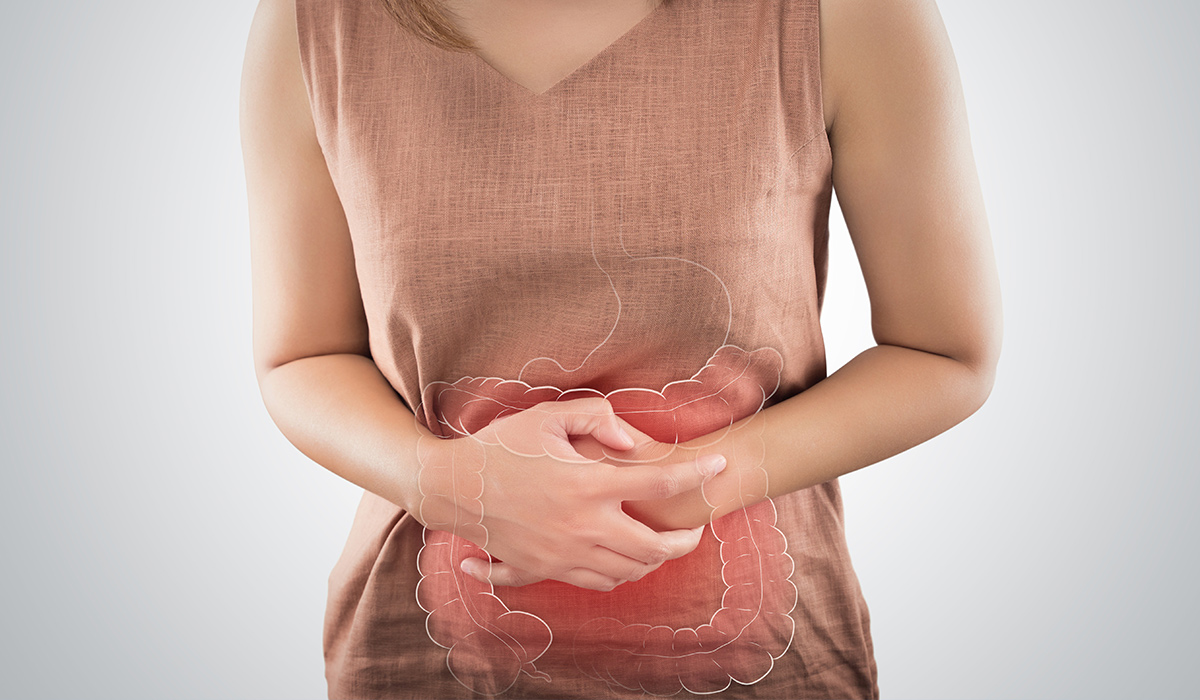Celiac Disease is also known as gluten intolerance. It is a condition that affects the small intestine and is caused by an autoimmune response with a genetic component.
Gluten![]() , which is toxic to the patient's body, leads to the atrophy of the small intestine villi, protrusions of the mucous membrane that increase the surface of the intestine and are responsible for the absorption of nutrients. As a result, food absorption is impaired, leading to various clinical symptoms.
, which is toxic to the patient's body, leads to the atrophy of the small intestine villi, protrusions of the mucous membrane that increase the surface of the intestine and are responsible for the absorption of nutrients. As a result, food absorption is impaired, leading to various clinical symptoms.
Thanks to the progress of research and clinical observations, we know that celiac disease is not only a disease of the intestines but the whole system, caused by a genetically determined abnormal immune response of the body to gluten. This condition is, therefore, a result of the interaction of genetic, immunological (associated with the activity of the immune system), and environmental factors.
Celiac disease is not an allergy, although it is often confused with it. It is considered the most severe food intolerance.
What happens when a person with a gluten intolerance eats a “forbidden” product?
The process![]() starts when a fragment of gluten resistant to the action of hydrochloric acid and digestive enzymes of the digestive tract penetrates the wall of the small intestine. Under the influence of enzymatic changes, it transforms into a form that stimulates the cells of the immune system to release inflammatory factors. Chronic inflammation of the small intestine mucous membrane leads to damage and atrophy of the intestinal villi through which digested nutrients enter the circulation.
starts when a fragment of gluten resistant to the action of hydrochloric acid and digestive enzymes of the digestive tract penetrates the wall of the small intestine. Under the influence of enzymatic changes, it transforms into a form that stimulates the cells of the immune system to release inflammatory factors. Chronic inflammation of the small intestine mucous membrane leads to damage and atrophy of the intestinal villi through which digested nutrients enter the circulation.
As a result, the absorption of proteins, fats, sugars, vitamins, and mineral salts into the bloodstream is impaired. The immune system response is not limited to the intestinal wall. In the course of the disease, antibodies are also formed, the presence of which in the blood facilitates the diagnosis of celiac disease.
Symptoms after eating gluten in patients are mainly the stimulation of the immune system, which produces antibodies and is responsible for inflammation in the body. As a consequence, the small intestine is weakened, and symptoms appear mainly from the digestive system, including intestinal villi inflammation. A very intense headache, even a migraine, may appear after about 1-2 hours after eating a gluten-containing product.
The disease is more common in patients with![]() :
:
Its risk is also higher in relatives of patients diagnosed with celiac disease. Genetics![]() plays a significant role in the development of celiac disease. It affects identical twins in about 75% of cases, indicating a strong genetic influence. Additionally, the condition is common for individuals who have specific histocompatibility antigens that are closely linked to immune system function.
plays a significant role in the development of celiac disease. It affects identical twins in about 75% of cases, indicating a strong genetic influence. Additionally, the condition is common for individuals who have specific histocompatibility antigens that are closely linked to immune system function.
The classic form of celiac disease with gastrointestinal symptoms occurs in young children, pregnant women, and the elderly. This condition in adults is mainly an oligosymptomatic form in which extraintestinal symptoms come to the fore. It happens that even ten years pass from the onset of the first symptoms to the diagnosis. There is a silent form of the disease, without clinical signs but with the presence of characteristic antibodies and atrophy of the intestinal villi, and the so-called latent form, also asymptomatic, with typical antibodies, normal mucosa, and the risk of ailments caused by a diet containing gluten.
Celiac disease develops gradually or attacks suddenly. Among the factors that may accelerate its disclosure, we include:
The symptoms of this condition in adults can be very diverse:
More often, however, there are cases when initially nothing indicates a disease of the digestive system. Celiac disease often causes skin symptoms and may suggest Dühring's disease![]() (Dermatitis Herpetiformis) – a cutaneous form of celiac disease. Gluten intolerance also causes symptoms from the genitourinary system (delayed puberty), the nervous system (depression, balance disorders, headaches, epilepsy), paleness, fatigue, muscle weakness, short stature, tooth enamel loss or coagulation disorders manifested by easy bruising and nosebleeds. Therefore, it is not a disease that only pediatricians or gastroenterologists (specialists in digestive system diseases) deal with, especially since its picture may change depending on the patient's age.
(Dermatitis Herpetiformis) – a cutaneous form of celiac disease. Gluten intolerance also causes symptoms from the genitourinary system (delayed puberty), the nervous system (depression, balance disorders, headaches, epilepsy), paleness, fatigue, muscle weakness, short stature, tooth enamel loss or coagulation disorders manifested by easy bruising and nosebleeds. Therefore, it is not a disease that only pediatricians or gastroenterologists (specialists in digestive system diseases) deal with, especially since its picture may change depending on the patient's age.
As mentioned above, the full-blown (overt, classic) form of celiac disease is most common in children, pregnant women, and the elderly. Even though it is relatively easy to diagnose, it is often confused with food allergy, stress reaction, or irritable bowel syndrome.
Symptoms of gluten intolerance![]() in this form of celiac disease:
in this form of celiac disease:
In oligosymptomatic celiac disease![]() (poorly symptomatic or even asymptomatic), the lesions affect only the small intestine mucous membrane. They are usually not accompanied by symptoms typical of the overt form. This form of the condition is the most common.
(poorly symptomatic or even asymptomatic), the lesions affect only the small intestine mucous membrane. They are usually not accompanied by symptoms typical of the overt form. This form of the condition is the most common.
The main symptoms are:
The latent form of celiac disease occurs when characteristic antibodies are found in the blood of people with a normal picture of the intestine. These people can expect villi atrophy in the future and full development of the disease.

If someone is experiencing gastrointestinal problems, it's recommended to see a gastroenterologist.
Currently, there is no universally accessible diagnostic test![]() that can definitively confirm or rule out conditions like gluten intolerance.
that can definitively confirm or rule out conditions like gluten intolerance.
The significant tests in the diagnosis of celiac disease are based on the determination of antibodies typical for this disease. In turn, endoscopy![]() of the upper gastrointestinal tract allows the assessment of the duodenum, which is the beginning of the small intestine. Here, celiac disease may be indicated by the flattening or disappearance of mucosal folds, its uneven surface, or translucency of blood vessels. The great advantage of endoscopic examination is the possibility of taking several samples (biopsy) from different places for microscopic examination, which answers the question of whether there is atrophy of the villi.
of the upper gastrointestinal tract allows the assessment of the duodenum, which is the beginning of the small intestine. Here, celiac disease may be indicated by the flattening or disappearance of mucosal folds, its uneven surface, or translucency of blood vessels. The great advantage of endoscopic examination is the possibility of taking several samples (biopsy) from different places for microscopic examination, which answers the question of whether there is atrophy of the villi.
Biopsies![]() are performed for the diagnosis of celiac disease in adults. In the case of the children
are performed for the diagnosis of celiac disease in adults. In the case of the children![]() it only happens if the following conditions are simultaneously met:
it only happens if the following conditions are simultaneously met:
Additional tests may show anemia, an increase in the number of platelets and the activity of some liver enzymes, and a decrease in the electrolytes or protein concentration in the serum. Further diagnosis reveals a reduction in iron and some vitamins and bone mineral density in some cases.
The final diagnosis of celiac disease is possible with the simultaneous occurrence of symptoms indicating this disease (or its suspicion in the case of people in risk groups), the presence of typical antibodies, the disappearance of intestinal villi, the exclusion of other diseases and the improvement of the condition of patients after eliminating gluten from the diet.
When diagnosed with celiac disease, patients are usually referred to dieticians, where they are taught what foods they must avoid and what is best to replace them with. It is significant to ensure the correct diet balance with the supplementation of ingredients that are typically obtained from gluten-containing products – e.g., fiber and B vitamins.
The prognosis for celiac disease is unfavorable – it is a “lifelong” disease. However, with strict adherence to a gluten-free diet![]() , you can control the course of the disease and live a normal life.
, you can control the course of the disease and live a normal life.
Patients should remain under medical care, primarily to control compliance with dietary recommendations and assess possible nutritional deficiencies and their complications. Deviations from the diet in the case of celiac disease are not recommended – the consumption of even one meal containing gluten can cause a recurrence of the disease.
In the gluten-free diet, it is forbidden to eat products containing wheat, rye, barley, oats, triticale and spelled, and any products with their addition.
It is necessary to supplement the missing vitamins and mineral salts but a diet consisting of the exclusion of all cereal products derived from wheat, rye, barley, and oats is of fundamental importance.
It includes naturally gluten-free foods and food products with a gluten content of less than 20 mg per 1,000 g of product. They are marked with the crossed grain symbol.
Naturally, gluten-free products include corn, rice, buckwheat, millet, soybeans, and potato flour. You can also eat nuts, meat (including fish), eggs, sugar, honey, coffee beans, tea, and alcoholic beverages except for beer and malt whisky. Industrial gluten-free products include gluten-free wheat starch and gluten-free flour.
Due to the deficiency of the enzyme digesting lactose (milk sugar) that may coexist with celiac disease, sometimes it is also required to temporarily exclude milk and dairy products from the diet – although they are free of gluten in their pure form.
In most people, after being on a gluten-free diet, symptoms usually disappear within two weeks, and microscopic changes in the small intestine within 6-8 weeks. In rare cases, using powerful drugs that suppress the function of the immune system is required.

Compared to other diseases of the gastrointestinal tract, the treatment of celiac disease seems to be quite effortless. However, these are some problems![]() – which the patients and their families know perfectly well.
– which the patients and their families know perfectly well.
Establishing a diagnosis does not always go hand in hand with educating patients about dietary recommendations. Often, within a radius of several dozen kilometers from their home, there is no dietary clinic that would help create a proper menu. In addition, industrial gluten-free products are usually only available in large cities, and their price is higher than traditional products. It is also necessary to pay great attention to the way of storing food at home because negligence in this respect can lead to gluten contamination of a gluten-free product.
We should also remember that gluten is a common additive present in, among others, pates, sausages, yogurts, ice cream, candies, chips, sauces, baking powder, or powdered cream. Also, some medicines (e.g., painkillers or anti-allergic medicines) may contain an admixture of gluten, so it is significant to carefully read food labels and drug information leaflets.
The lack of treatment and inaccurate adherence to dietary recommendations lead to complications![]() . Among them, the greatest threat is the development of malignant tumors, e.g., of the throat, esophagus, and small intestine. The primary tumor may also appear outside the digestive tract, e.g., in the thyroid gland, liver, and lymph nodes. Other possible complications include:
. Among them, the greatest threat is the development of malignant tumors, e.g., of the throat, esophagus, and small intestine. The primary tumor may also appear outside the digestive tract, e.g., in the thyroid gland, liver, and lymph nodes. Other possible complications include:
The important thing is that other co-morbid conditions can occur along with celiac disease. They are mainly related to the undiagnosed form of asymptomatic celiac disease. These diseases may include:
Fortunately for patients, work on new methods of treating celiac disease continues, for example – by adding bacterial enzymes to products containing gluten that digest this protein and weaken its destructive effect on the intestinal mucosa. As mentioned above, people with this condition can lead a normal life but has to maintain a gluten-free lifestyle.
Table of Contents

Gluten is found in many foods. It is a vegetable protein that has specific functions. But some people should definitely… read more »

The term “bowels” refers to the gastrointestinal tract, specifically the intestines. They are divided into two main parts: the small… read more »

A bloated stomach is a condition characterized by a feeling of fullness, tightness, or swelling in the abdomen. What are… read more »

The duodenum is an important organ with useful functions. Find out how to recognize duodenal problems that herald disease. Learn… read more »

Ulcerative colitis is a chronic inflammatory disease of the large intestine, often manifested by diarrhea with blood. Here is everything… read more »

Hashimoto's disease is an autoimmune disease. May cause hypothyroidism. Check what are the symptoms of Hashimoto's disease and how it… read more »

Buckwheat is a pseudo-cereal with good nutritional value and many health benefits. Find out what you can gain from eating… read more »

Flatulence is the excessive accumulation and release of gases. See what are the causes of this condition. What to do… read more »

Do you know what the fibromyalgia diet should be? Find out what to eat and what to avoid. Create the… read more »